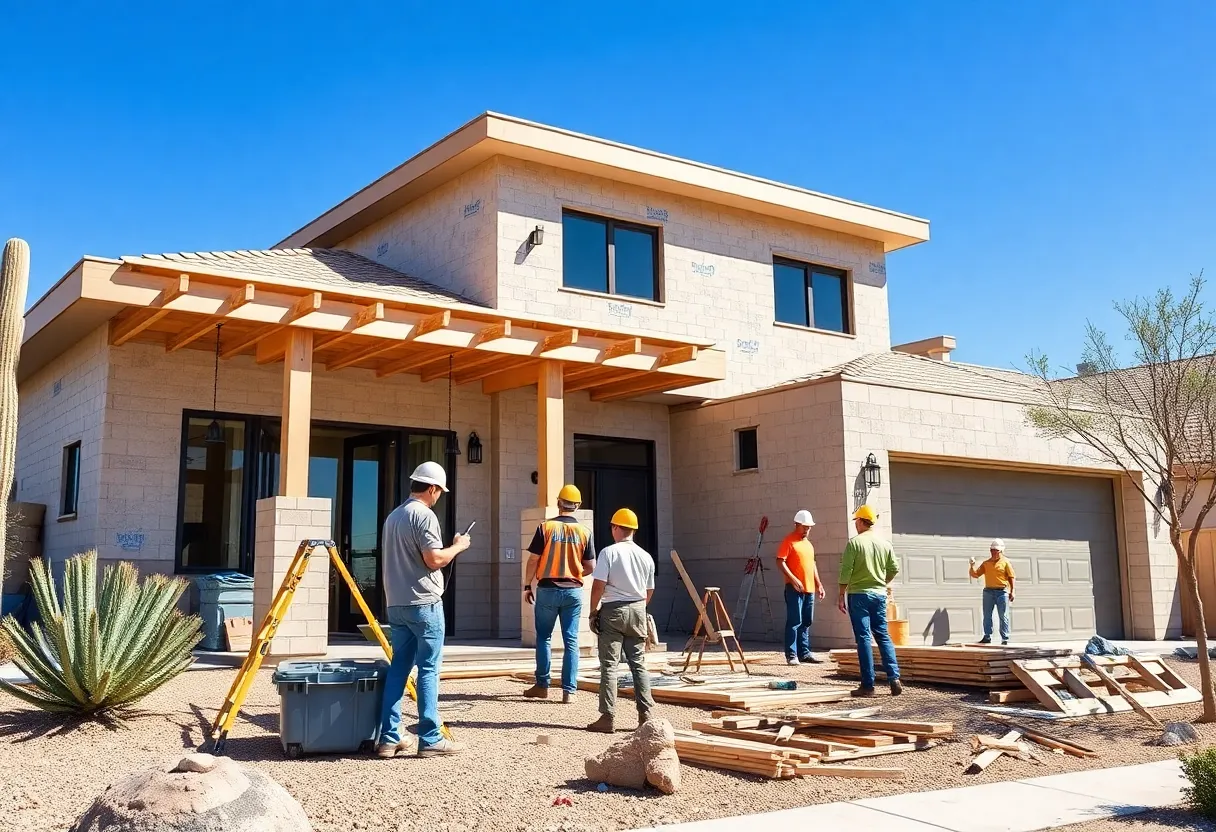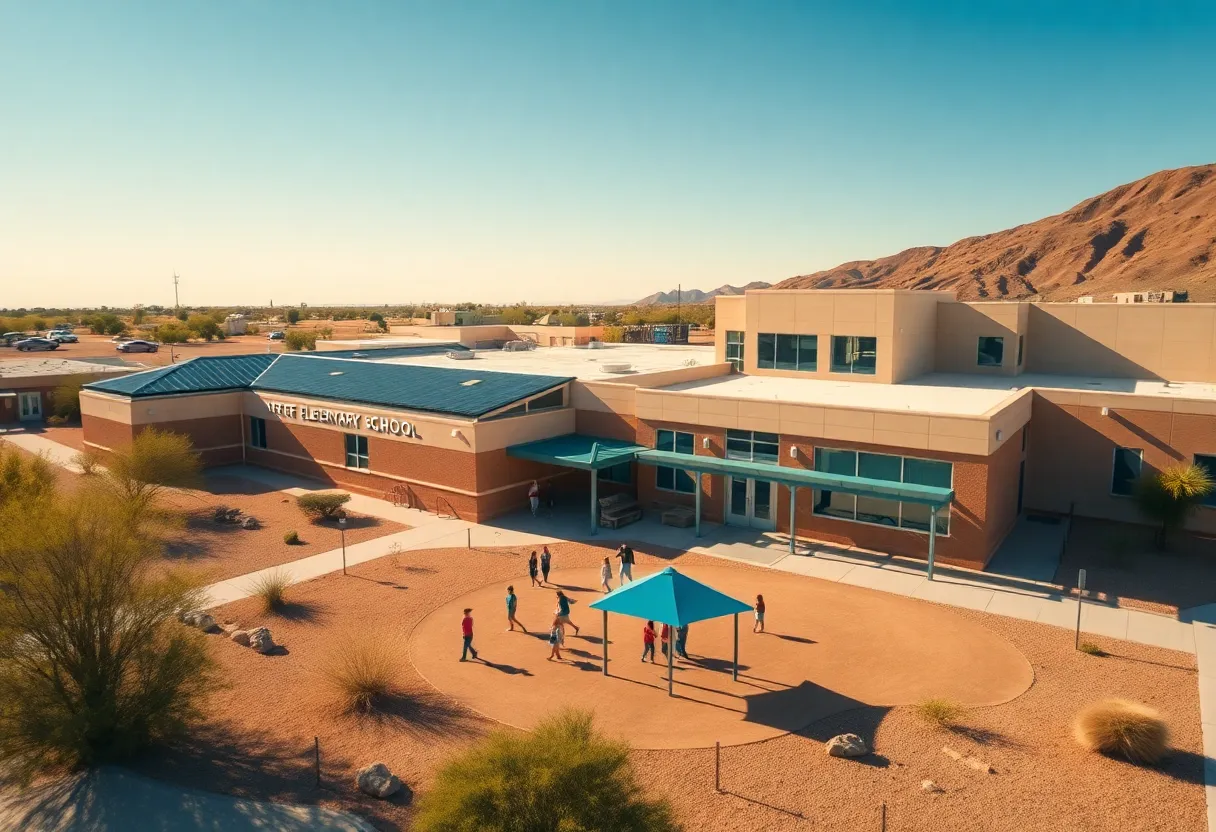How to Choose the Best Lawn Care Practices for Your Phoenix Home
Introduction
Maintaining a healthy and vibrant lawn in Phoenix requires an understanding of the unique environmental challenges posed by the desert climate. The region’s extreme heat during summer and mild winters demand specialized lawn care practices. Implementing the right strategies ensures that your turf remains lush, resistant to drought, and sustainable throughout the year. Tailoring your approach to Phoenix’s climate is essential for a thriving landscape.
Understanding Phoenix’s Climate
Phoenix’s climate is classified as arid and characterized by:
- Hot, dry summers: Temperatures traditionally surpass 100°F (38°C), often peaking higher, which causes significant water loss through evaporation.
- Mild winters: Temperatures rarely fall below freezing, allowing for year-round plant growth but also requiring protection against occasional cold snaps.
This environment necessitates water-efficient practices and plant selections that are adapted to withstand heat stress. The soil tends to be sandy and drains quickly, which affects nutrient retention and moisture availability.
Choosing the Right Grass Type
The cornerstone of successful lawn care in Phoenix is selecting drought-tolerant, heat-resistant grass varieties. Warm-season grasses thrive in this climate, forming the basis for robust lawns. Key options include:
Bermuda Grass
- Known for its durability and ability to withstand high temperatures and drought conditions.
- Requires full sun exposure and moderate fertilization.
Zoysia Grass
- Offers a dense, carpet-like appearance and tolerates heat well.
- Requires less water once established and has excellent drought resistance.
Buffalo Grass
- A native species that demands minimal water and maintenance.
- Handles high temperatures with minimal irrigation, making it ideal for sustainable landscapes.
Choosing the appropriate grass type creates a foundation for resilient and low-maintenance lawns while managing water resources effectively.
Efficient Watering Practices
Water conservation is critical in Phoenix’s arid environment. Effective watering strategies include:
Watering Schedule
Early morning watering before sunrise reduces water loss through evaporation and promotes deep root growth. This timeframe ensures the soil retains moisture during the heat of the day.
Watering Depth
Aim for deep, infrequent watering to encourage deep root systems. Shallow watering leads to shallow roots, making lawns more vulnerable to drought stress and disease.
Avoid Overwatering
Excessive watering can foster fungal diseases and weaken roots. Use moisture sensors or soil probes to gauge when water is necessary, ensuring you do not exceed the optimal level.
Soil Preparation and Maintenance
Healthy soil underpins a successful lawn. Key practices involve:
Soil Testing
Regular testing informs pH levels and nutrient content. Adjustments such as liming or fertilization are based on test results to optimize soil conditions.
Aeration
Annual aeration relieves soil compaction, increases water infiltration, and promotes air exchange in the soil. This enhances root development and nutrient uptake.
Fertilization
Apply slow-release fertilizers tailored to your soil test results. Focus on nitrogen-rich feeds during active growing seasons and reduce application during dormant periods to prevent runoff and pollution.
Effective Mowing Techniques
Proper mowing promotes turf vitality and minimizes stress:
Mower Height
Set blades to the recommended height for your grass type—generally 1-2 inches—to prevent scalping and promote shade coverage that reduces weed germination.
Mowing Frequency
Maintain a regular mowing schedule, removing no more than one-third of the grass blade at each cut. This prevents stress and encourages thicker growth.
Mower Maintenance
Keep blades sharp to ensure clean cuts. Dull blades damage grass tissues, making plants more susceptible to disease.
Weed and Pest Control
Keeping weeds and pests in check is critical for lawn health:
Weed Prevention
Apply pre-emergent herbicides early in spring to inhibit weed seed germination. Use mulching and proper fertilization to promote turf dominance over invaders.
Pest Monitoring
Regular inspection helps detect pests early. Common issues include grass grubs and chinch bugs. Address pests promptly with targeted treatments or natural remedies.
Organic Approaches
Implement integrated pest management techniques using biological controls and compost teas to minimize environmental impact.
Seasonal Lawn Care Adjustments
Adapting practices throughout the seasons enhances lawn resilience:
Spring
- Prepare soil in early spring with aeration and fertilization.
- Overseed with heat-tolerant varieties if necessary.
Summer
- Adjust watering to early morning sessions.
- Maintain mowing heights to shade roots and reduce stress.
Fall
- Clean up debris to prevent disease.
- Apply winterizer fertilizers and prepare for cooler temperatures.
Winter
- Monitor for frost damage and avoid excessive watering.
- Ensure the grass remains above soil freezing point to prevent harm.
Attention to seasonal details ensures a healthy, vigorous lawn year-round.
Alternative Landscaping Options
Given the limitations of traditional lawns in desert environments, alternative options offer benefits such as water savings and ease of maintenance.
Xeriscaping
- Involves drought-tolerant plants—succulents, cacti, desert grasses—and minimal turf areas.
- Reduces water usage and cuts down on mowing and fertilization needs.
Artificial Turf
- Provides a green, maintenance-free surface without watering or mowing.
- Ideal for patios, play areas, and decorative zones.
Both options support sustainable landscaping and cost-effective maintenance over time.
Conclusion
Creating and maintaining a thriving lawn in Phoenix hinges on careful planning and adherence to climate-specific practices. By selecting appropriate grass varieties, implementing efficient watering and soil management, and adjusting for seasonal variations, homeowners can achieve vivid, sustainable landscapes. Integrating alternative landscaping solutions further enhances water conservation and reduces maintenance demands. Persistence and informed choices are key to a resilient lawn amidst the desert’s challenges.
Frequently Asked Questions
What type of grass is best suited for Phoenix’s climate?
Warm-season grasses such as Bermuda, Zoysia, and Buffalo Grass are most suited due to their heat tolerance and drought resistance.
How often should I water my lawn in Phoenix?
Water deeply 2-3 times per week early in the morning, adjusting based on weather conditions and soil moisture levels. Avoid frequent shallow watering.
When should I fertilize my Phoenix lawn?
Fertilize during the active growing seasons—spring and summer—with slow-release nitrogen. Reduce feeding in winter or during dormancy.
Can I use organic methods for pest control?
Yes. Techniques like biological controls, compost teas, and beneficial insects can effectively manage pests while reducing environmental impact.
What are alternatives to traditional lawns in desert environments?
Xeriscaping with drought-tolerant plants and artificial turf are popular alternatives that require minimal water and maintenance.
FAQ Schema (JSON-LD)
Key Features Summary
| Feature | Description |
|---|---|
| Climate Adaptation | Practices tailored to hot, dry summers and mild winters |
| Grass Selection | Emphasis on drought-resistant, heat-tolerant species like Bermuda, Zoysia, Buffalo Grass |
| Watering Strategies | Deep, infrequent watering early in the morning; use of moisture sensors |
| Soil Management | Regular testing, aeration, and fertilization for optimal soil health |
| Mowing Techniques | Maintaining proper height, sharp blades, and regular schedule |
| Seasonal Adjustments | Modified routines for spring, summer, fall, and winter |
| Alternative Landscapes | Xeriscaping and artificial turf to reduce water and maintenance |
Author: STAFF HERE PHOENIX WRITER
The PHOENIX STAFF WRITER represents the experienced team at HEREPhoenix.com, your go-to source for actionable local news and information in Phoenix, Maricopa County, and beyond. Specializing in "news you can use," we cover essential topics like product reviews for personal and business needs, local business directories, politics, real estate trends, neighborhood insights, and state news affecting the area—with deep expertise drawn from years of dedicated reporting and strong community input, including local press releases and business updates. We deliver top reporting on high-value events such as the Waste Management Phoenix Open, Cactus League Spring Training, and Arizona State Fair. Our coverage extends to key organizations like the Greater Phoenix Chamber of Commerce and Visit Phoenix, plus leading businesses in technology and healthcare that power the local economy such as Intel and Banner Health. As part of the broader HERE network, including HERETucson.com, we provide comprehensive, credible insights into Arizona's dynamic landscape.





